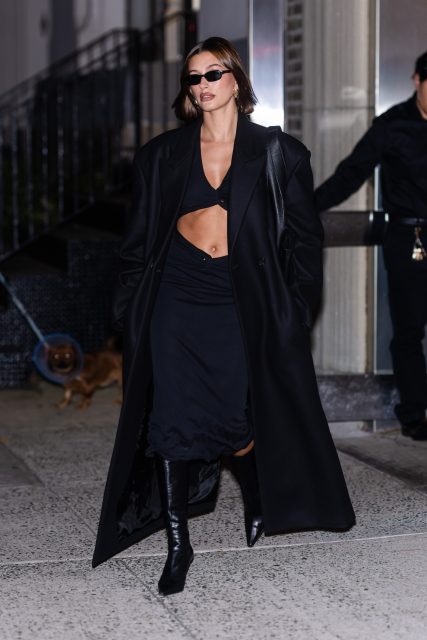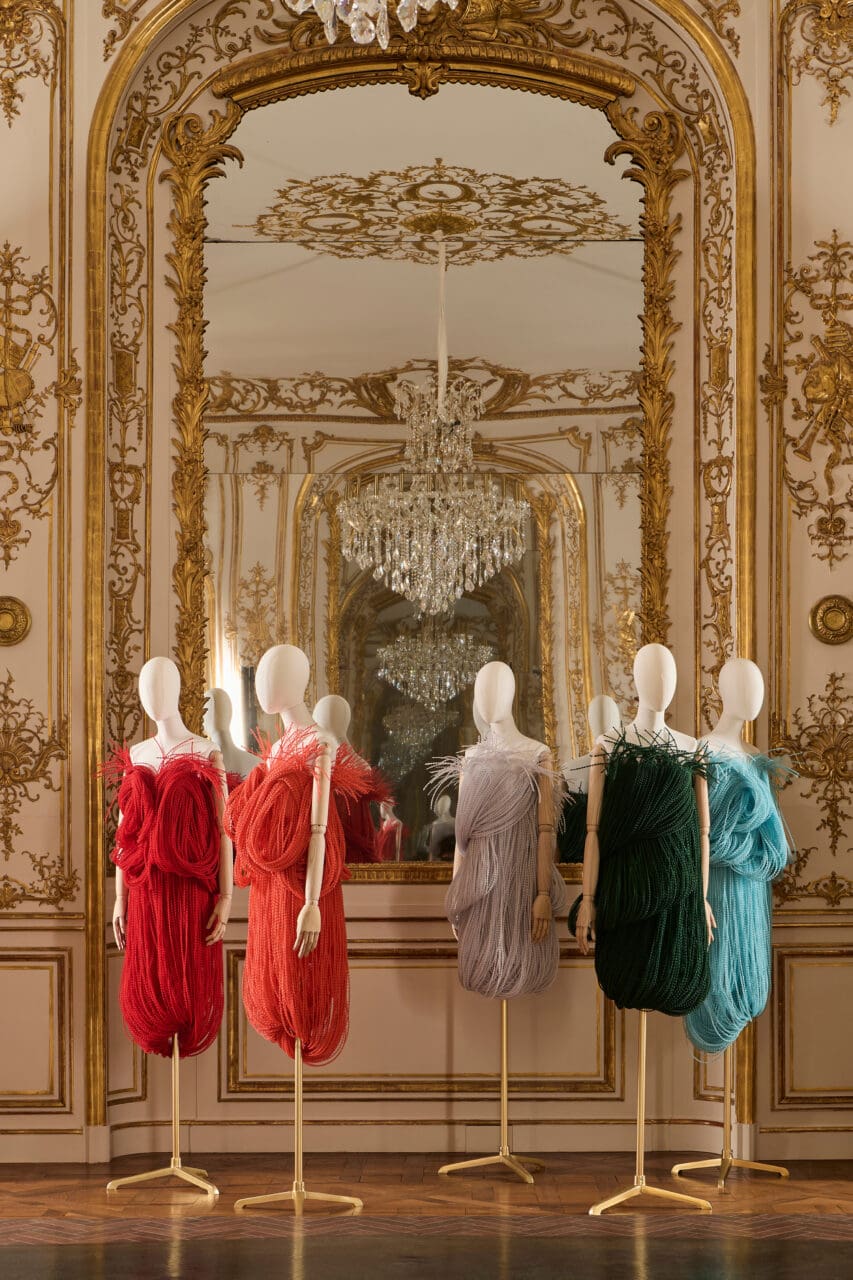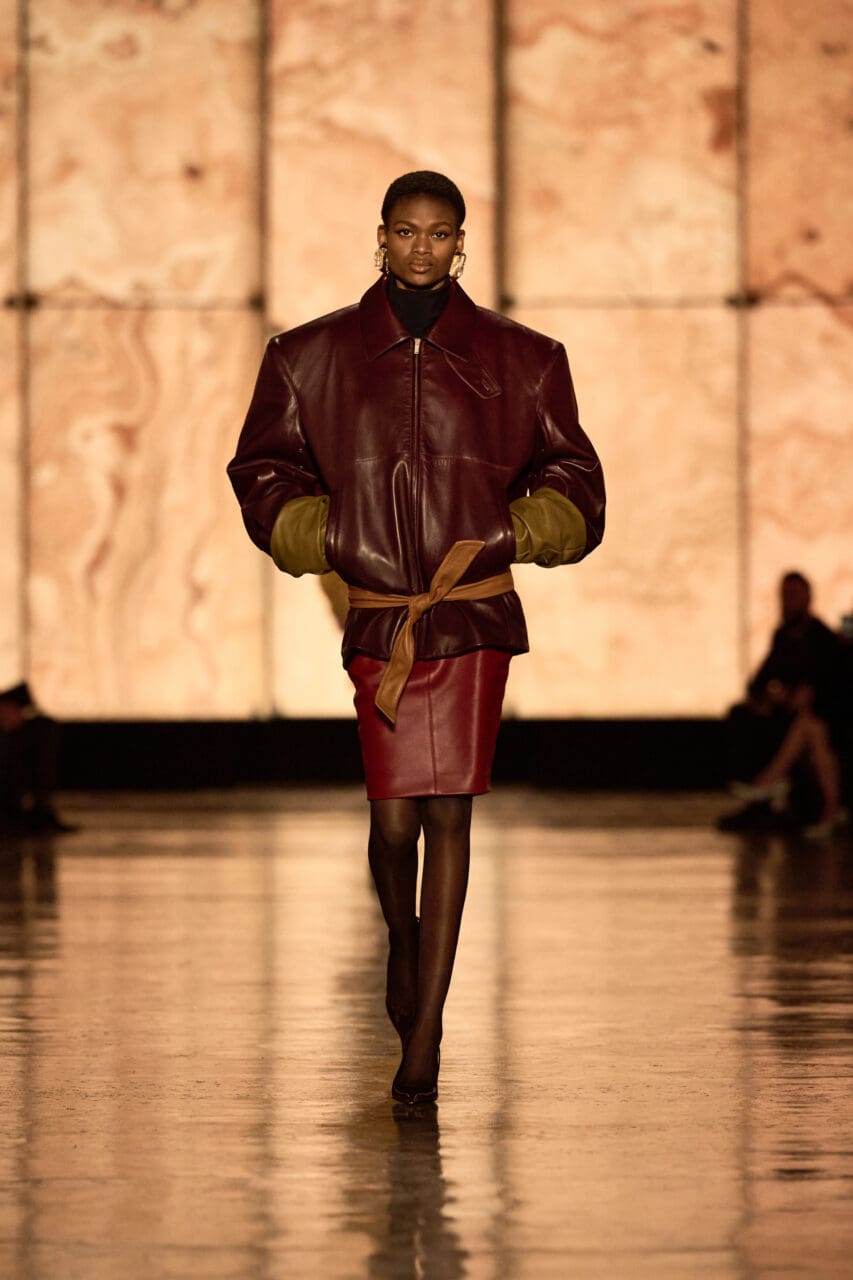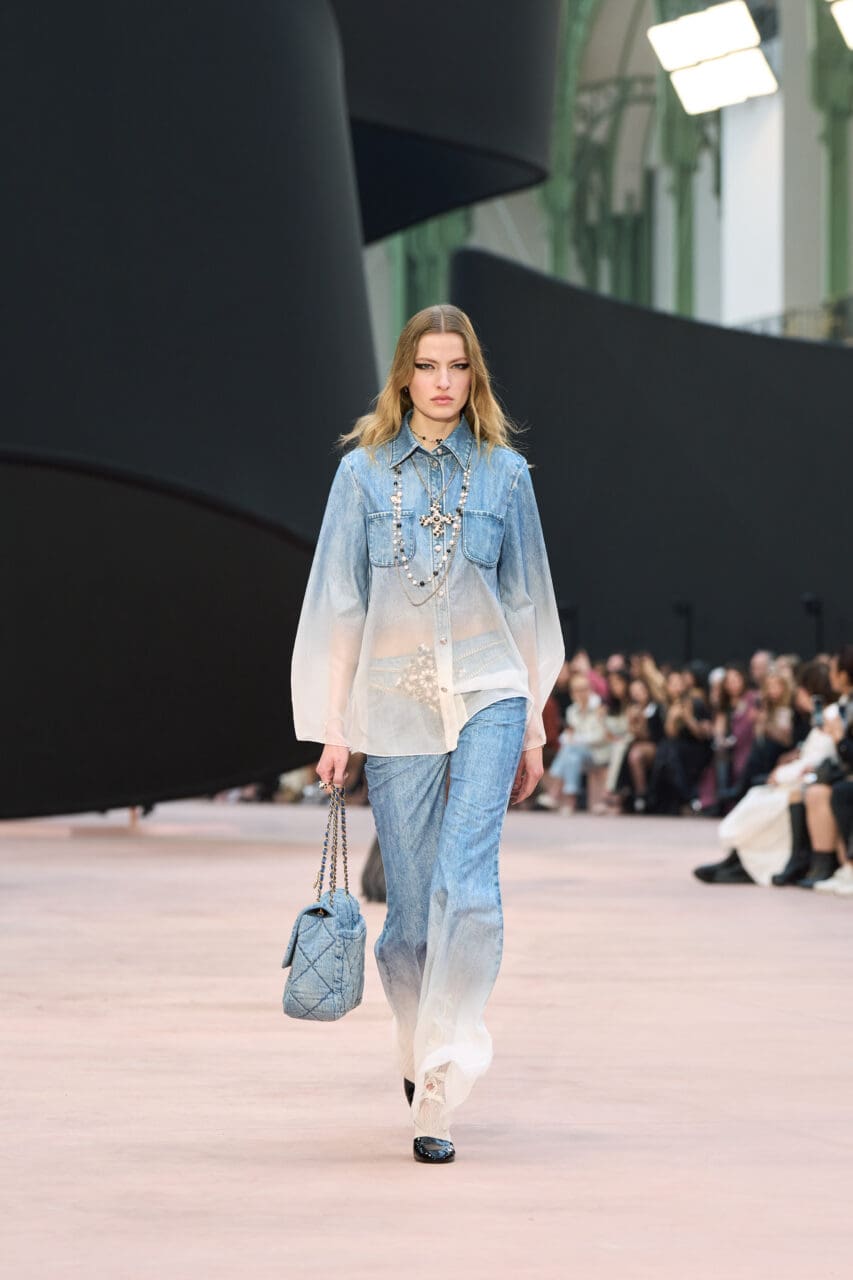During his three years at Fendi so far, Kim Jones has stayed true to one muse: house scion Delfina Delettrez Fendi. Before this afternoon’s show, he happily doubled down on that position: “I will always say that. Because she is just so chic and because of the way she dresses. And when you put it all together, it’s about the idea of function in life.”
As well as being a fourth-generation embodiment of the sophisticated and progressive female spirit of the house that bears her name, Fendi is also embedded in Jones’s practice as the house’s artistic director of jewelry. She was in the Milan show space as Jones unpicked the thread of this collection. It started as he was ensconced in Fendi’s Rome HQ, deep in the archives. Something in them from circa 1984 sparked thoughts of the New Romantics and the Blitz Kids in the UK—“Princess Julia, Judy Blame, Leigh Bowery, these people I have always admired”—as well as the positive cultural disruption that occurred when a wave of Japanese designers from Issey Miyake to Hanae Mori and Yohji Yamamoto hit Paris. Underlying all that was the influence of the eternal city itself: Rome, whose original Latin language contained the root of Romance tradition.
This led to a collection layered with all these archaeologies but never overwhelmed by them. The Japanese influence was evident in the shape and precision of the immaculate tailoring and shirting. Through the polka-dot embroideries and the hoods, an echo of Leigh Bowery’s progressively anarchic spirit was present but not outrageously so. The Romanesque soul of Fendi itself was translated through the classical statuary, whose images were ingeniously integrated into the closing section, as well as the sophistication with which tailoring was blended with Aran knitwear, jersey, mink corduroy, tufted shearling, and stitched leathers and suedes to create a discreetly unconventional take on classicism.
There was humor too in the leather fortune tellers and Chupa Chups–sized lollipop holders—surely a clubbing reference—attached to new soft versions of the Peekaboo and other bags or sometimes slung around the models’ necks. Two new bags, a midsize satchel named Simply and a larger rounded shopper called the Roll, were both crafted to be soft, yielding, and tactile and acted as further hero pieces. They were protagonists in a collection where Jones played the classical against the progressive on various levels to expose a new dimension of Fendi’s multifaceted 99-year-old soul.
Editor
Luke LeitchCredit
Lead image: Umberto Fratini / Gorunway.com





